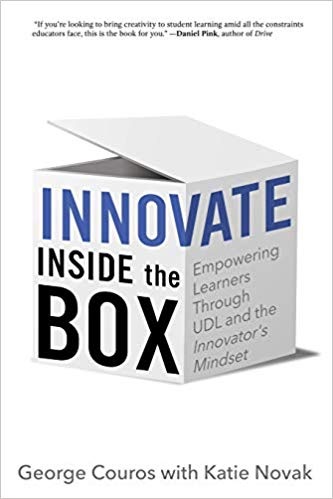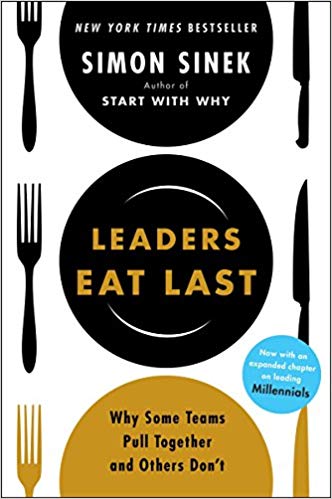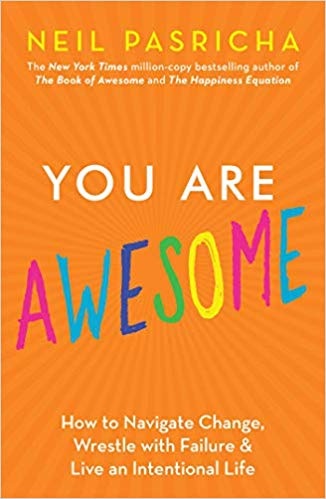
Innovate Inside the Box: Empowering Learners Through UDL and the Innovator’s Mindset by George Couros with Katie Novak builds on his previous book The Innovator’s Midset. The goal of this book is to help teachers grow so they are more likely to make a difference in their students’ lives. Constraints like red tape, limitations, and lack of funds comprise “The Box” in the title. Innovating in spite of those constraints involves finding another way around problems that limit the impact teachers have on their students.
Introduction: Because a Teacher
- Most of us can remember one or more teachers who made a significant positive difference in our lives. Perhaps other adults have done the same. A goal of this book is to help teachers grow so they are more likely to be that kind of difference-maker. Constraints like red tape, limitations, and lack of funds comprise “The Box” in the title. Innovating in spite of those constraints involves finding another way around problems that limit the impact teachers have on their students.
Part One – The Core of Innovative Teaching and Learning
- 1. Relationships: Research shows that students perform better when teachers prioritize relationship building. Increased social capital leads to higher test scores. Since collaboration builds social capital it also raises scores. This means that relationships between adults are important too. It seems we learn more from someone with whom we have a positive connection.
- Tips for relationship building include: Greeting kids at the door, playing music as they enter, making first interactions positive, calling parents early, flexible planning, allowing students to design the classroom, tapping into to each student’s passion, encouraging students to ask questions to keep them curious, and loving them. Studies with dropouts show that they usually weren’t connected with anyone at school. If a student arrives late just say “I’m glad you are here.”
- 2. Learner-Driven, Evidence-Informed: Learner-driven means that students have a voice in setting learning goals. Evidence-informed means that teachers go beyond grades when they give students feedback. You should be driven by students, not data. Students get lost in the process when teachers are driven by test scores. Beyond grades, evidence can include portfolios, self-assessments, performances, and anything that highlights learning and growth.
- Most of what employers look for cannot be graded. That includes creativity, initiative, critical thinking, and complex problem-solving. Grades can even deter learning. George suggests that you give students feedback without grades. When students are invested in their own goals, they will go beyond the goals the teacher sets for them. Focus on students’ strengths first. If they see weakness as they use their strengths they will be more motivated to work on it.
- 3. Creating Empowered Learning Experiences: Empowerment is about helping students figure out what they can do for themselves. Rather than listening, reading, observing, and consuming they should spend more time speaking, writing, interacting, and creating. Student choice is big here. If students have a voice in what they learn and how they demonstrate that they have learned they will be more motivated. They should be doing writing blogs, video scripts, and podcasts.
- The next big idea is to have students generate questions rather than just give the right answers. The best questions might be those that the teacher can’t answer. We also note that curiosity improves intelligence as it drives the acquisition of knowledge. In essence, our goal is to create self-directed learners. George tells of how he created a student IT department at his school and how another teacher had students be responsible for all aspects of running the school store. In essence, students are the most underused resource in our schools.
- 4. Master Learner, Master Educator: In addition to continuously learning, teachers need to make sure that students know they are learning. For example, if you want students to curate digital portfolios, you should first make one yourself and let them see it. This is learning for your students. Learning about your students should, however, be your first priority. Start with the student who gives you the most trouble and spend time every day in personal conversation. That should improve that student’s behavior, which can improve the entire class.
- Rather than planning every step of the way be ready to adapt. Be sure to tell students to “figure it out” rather than telling them the answers. Students should be finding resources on their own and experiencing the power of teaching the teacher. The teacher and the class are smarter than the teacher alone.

















